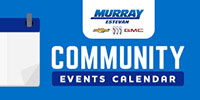The Nature Conservancy of Canada (NCC) is offering a different perspective to 'No Mow May.' The NCC is asking people to consider another idea that they say is a more effective way to help pollinators.
The goal of 'No Mo May' is to not mow your lawn during the month of May to allow flowers to grow in your lawn to help early-season pollinators.
Sarah Hoida, National Media Relations Manager at the NCC, said doing something is better than chopping down your lawn and the plants in it before pollinators get a chance to seed.
"But certainly 'No Mow May' isn't a wonder solution. Dandelions aren't particularly nutritious, for example, for native pollinators who have spent thousands of years evolving alongside native plants. So letting your lawn grow can support pollinators for a time, but once it's cut, there's not much nutrition to be found. The NCC is now encouraging people to take the next steps towards a pollinator-friendly yard by planting native species. You can also plant native species on your balcony or in your flower boxes as well."
Hoida explained that growing native plants is really a small act of conservation that can help urban wildlife and biodiversity in many ways.
"It's estimated that Canada has about 6.2 million lawns. That's a lot of green space and a lot of possibility to provide an area where pollinators can find food and can really thrive. The actions that we take close to home can really support wildlife populations and improve the health of urban ecosystems. They can also help our connection with nature."
"We can enrich our yards with native species to benefit the species we, in turn, depend on," Hoida said, "Like pollinators that support our crops and gardens."
 Aster. (Photo courtesy of NCC staff).
Aster. (Photo courtesy of NCC staff).Hoida said that native plants evolved alongside wild bees and butterflies and other kinds of pollinators.
"It's really important to provide a variety of different native plants that can support wildlife throughout the warmer months. Some plants will flower early on in April, May, June and others will flower later in the season in July, August, and September."
Hoida said that you want to be able to offer pollinators a buffet of sorts so that they can find something to eat and really thrive in your garden. When planting native plants, Hoida said that it's important to consider how much sunlight that area gets.
"You'd also want to think about the root system. Some plants won't work in smaller spaces, so you really want to have a chat with the person who works at your local garden centre and figure out which plants can thrive in smaller areas. A couple of examples would be the black-eyed susan, which is this really beautiful, vibrant yellow. Prairie crocus could be another option, and that's a plant that has some beautiful purple in it. Goldenrods are another option, it's a really kind of yellow fuzzy-looking plant."
Asters are also a great example, Hoida said, and those come in a range of colors, including white, mauve, blue, purple, and violet. "So you can really have a beautiful colorful space, just in your planter boxes or on your balcony that will also support pollinators."
"The last thing you want to consider is if your flower pot drains easily or not. That will really help you figure out how often you need to be watering these plants."
Hoida said that it's important to ask your garden centre staff or your native plant supplier about where the plants are grown.
"Often even though the plants might be native to your area if they're growing at a very far distance, they may not be as well suited or well adapted to your local area."
As well, Hoida advised about being aware of invasive species. "If you're not sure what you already have in your yard, you can always use the app "iNaturalist," which is a free app where you take a photo and you upload it to the app and you can find out which plants you actually have that already exist in your yard. You want to really make an effort to avoid invasive species which can really crowd out native plants and make it difficult for pollinators to thrive."
Hoida added those interested in more information can check out your Provincial Invasive Species Council, as well as The Nature Conservancy of Canada's website for information on invasive species, because she said that will really give the best chance for pollinators to do well in your area.
 Canada golden rod. (Photo courtesy of the NCC - Photo by Jean Isaac).
Canada golden rod. (Photo courtesy of the NCC - Photo by Jean Isaac).












